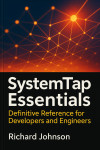SystemTap Essentials by Richard Johnson

Synopsis
"SystemTap Essentials"
"SystemTap Essentials" offers a comprehensive exploration of dynamic instrumentation for Linux systems, meticulously guiding readers from foundational theory to advanced practical implementations. The book opens by situating SystemTap within the broader landscape of tracing tools, comparing its architecture, capabilities, and security features to alternatives such as Perf, Ftrace, and eBPF. It adeptly covers SystemTap’s ecosystem, community engagement, and real-world application domains, imparting an appreciation for the tool’s significance in modern performance profiling, debugging, and systems observability.
Moving from theory to practice, the book provides thorough instruction on preparing environments for SystemTap, including kernel setup, deployment in both traditional and containerized infrastructures, and integration with automation and CI pipelines. Readers are coached through scripting fundamentals—probes, handlers, and advanced control flows—while building proficiency in data aggregation, statistical analysis, and exporting metrics for correlation with external monitoring platforms. Special emphasis is placed on probing both kernel and userspace components, uncovering system bottlenecks, profiling resource usage, and diagnosing latency across CPU, memory, I/O, and network subsystems.
Designed for reliability and sustainability, "SystemTap Essentials" also equips professionals with the skills needed to create, maintain, and troubleshoot robust tapsets in large-scale or production contexts. It addresses the critical concerns of script safety, automation, security policy integration, and performance impact mitigation. Concluding with a forward-looking perspective, the book discusses future trends, interoperability with emerging technologies like eBPF and DTrace, research directions, and pathways for deeper community involvement—making it an indispensable resource for engineers and administrators striving for excellence in Linux systems observability.
Reviews
Write your review
Wanna review this e-book? Please Sign in to start your review.







